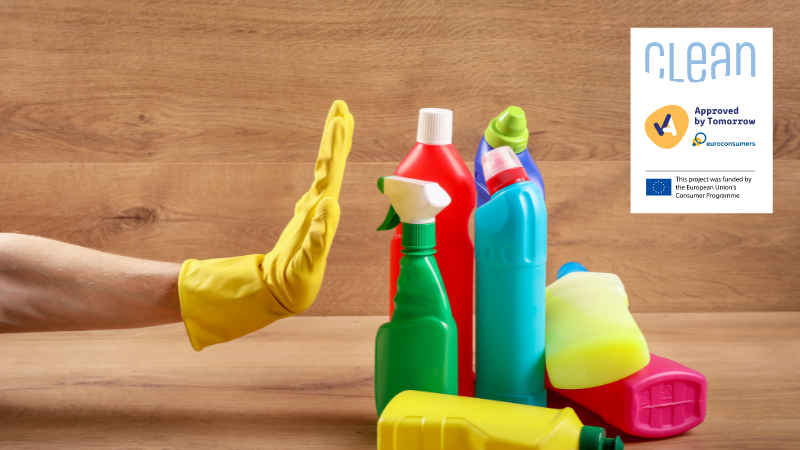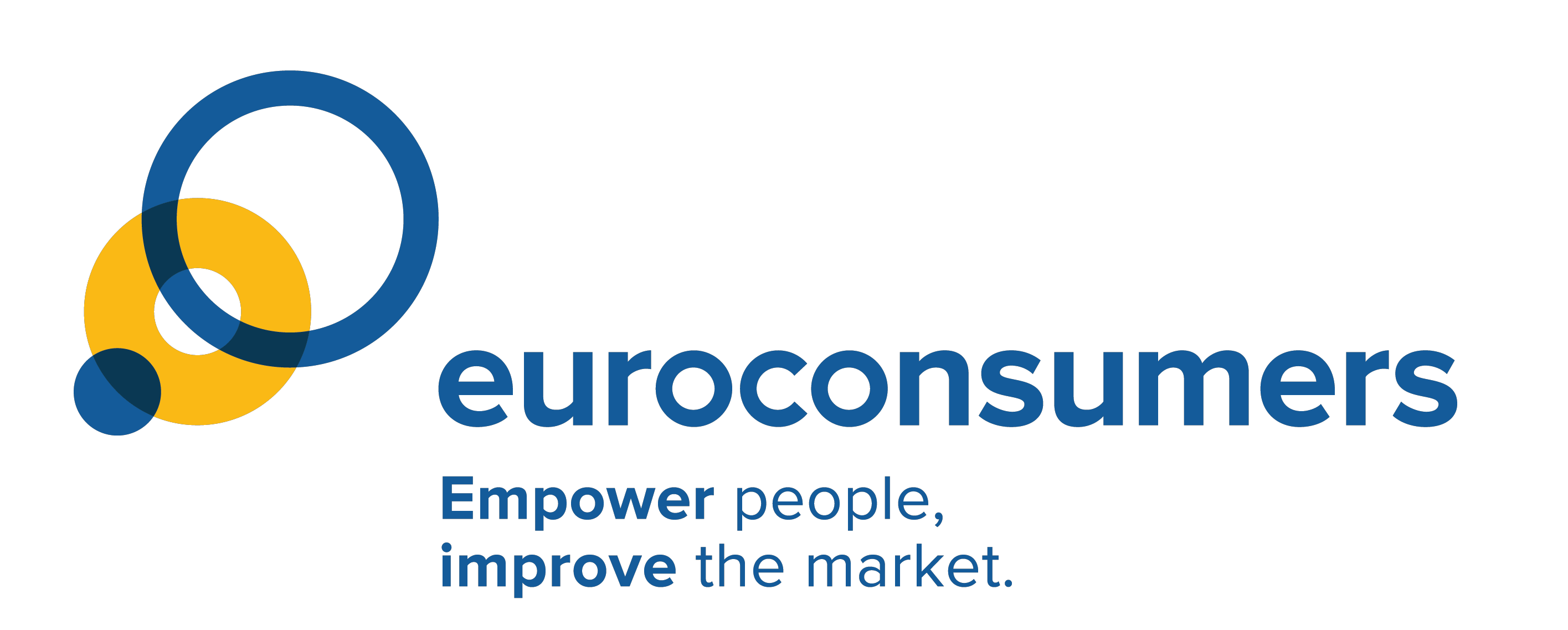CLEAN Project – How to know how ‘clean’ a detergent actually is

It is to overcome these market deficiencies that the CLEAN project was born. One year ago, Euroconsumers together with its national members OCU, Altroconsumo, Test-Achats, with the help of DECO Proteste, launched an initiative to help empower consumers by providing them with all the necessary information on household detergents. The one-year project, funded by the European Union’s Consumer Programme started in June 2020.
A survey which says a lot about the confusion of consumers
In a recent survey conducted by Euroconsumers among 4210 consumers in Belgium, Italy, Portugal and Spain, a majority of consumers said to pay attention to environmental aspects when purchasing household detergents. However, only a few respondents declared to be well-informed. More than half of respondents reported believing that environmentally-friendly claims are solely driven by marketing purposes.
Consumers have a right to reliable information
This right of consumers to get trustworthy information has long been defended by Euroconsumers. In its Approved by Tomorrow manifesto, Euroconsumers layd the foundation for real empowerment of consumers. A Better representation of the consumers’ perspective would allow them to play an active role in the green transition. If consumers are offered robust information, they can choose the most sustainable options, and therefore, together they can steer the market towards a greener path. This is why Euroconsumers is particularly excited about its CLEAN Project. Euroconsumers and its national members are convinced that this project will help correctly inform and empower consumers about sustainable products, and therefore rehabilitate consumers’ role in the green transition.
The CLEAN project identified detergents’ environmental weaknesses
In addition to clearly informing consumers on the performance and environmental impacts of detergents, the CLEAN Project investigates and reports on misleading or unproven environmental claims across the European Union. It also carries out advocacy at European and national levels to reduce such misleading environmental and green claims.
To accomplish this mission, the CLEAN project tested a wide range of detergent brands and models, from market leaders of established brands to numerous green detergents presenting some kind of ecological label or reputation. For each detergent, the label, packaging, and ingredients were combed through.
The CLEAN project: an intuitive and reusable methodology
This test builds upon robust test methodologies that were elaborated to be used in the future by citizens and consumer organisations. Euroconsumers and its members also carefully reviewed their existing test protocols on all-purpose detergents and bathroom cleaners to optimize their testing strategy. Euroconsumers and its national organisations also maintain dialogue with manufacturing associations (e.g. A.I.S.E.) and other consumer organisations to work towards an improvement of commercial practices and to improve the testing methodology.
Confused consumers won’t be surprised by the findings of the CLEAN project
The results of the tests led to the identification of several inaccuracies and defaults which justify consumers’ mistrust. Whereas it was dishwasher detergent, hand dishwasher detergent, or multipurpose detergent which was tested, the studies found out that more than half of the products tested contained ingredients that have a harmful impact on the environment. The only exception was for bathroom detergents, where only 11 of the 61 tested products contain harmful ingredients for the environment.
Tests revealed the main environmental weaknesses of detergent ingredients
Although European law specifies that detergent manufacturers shall make available on a website the ingredient data sheet, it turns out that several brands don’t do it. In some cases, when the list of ingredients appears on the company’s website, it is often outdated and the formulas presented are old. Test results also showed that many of the identified ingredients have no role in the performance of the detergents, and could therefore be avoided. Most importantly, several ingredients that are necessary for the manufacturing of detergents include substances that present a risk for the environment, while being easily replaceable by others that are less harmful.
Clean detergents’ packaging and website tend to be misleading
Euroconsumers and its member organisations also analysed the green claims of detergent manufacturers that are displayed on corporate websites or on product packaging. In all cases, claims related to ingredients, packaging, animal welfare, or more generally, environmental engagement, were reviewed. The results show that green claims on detergents can often drive away consumers from the best environmental choice. Many dishwasher detergents boast about being ‘without phosphates’, when the usage of such substances is in fact limited by law since 2017. Also, an important number of hand dishwashing detergents put emphasis on their plastic packaging and respect of animal welfare. However, this is less relevant information for the environment than the actual content of the product. Fortunately only a few products with a strongly harmful environmental impact carry green claims, with mostly claims about the package.
A campaign for clean detergent labels
Euroconsumers and its member organisations are leading a campaign for detergent labels to be true, clear, relevant, fair, and performance-based, to allow consumers to make knowledgeable purchasing decisions. For this to happen, environmental product self-declarations should be based on verified data which is easily understandable, and relates to important aspects of the product life cycle. For the sake of clarity, displayed information should not use legal restrictions to make environmental claims. Also, the quality of the detergent shouldn’t be undermined when the environmental impact is lowered.
Does detergent produce microplastics?
The CLEAN project tests were also conducted to evaluate if the detergent hydro soluble film releases microplastics into wastewater. The results indicated that there was no sign of significant pollution of wastewater by microplastic generated by capsules. It turns out that fiber shredding from clothing is the main source of microplastics in wastewater as a consequence of washing cycles. It was found that in some cases however the fiber shedding can be influenced by some detergents.

